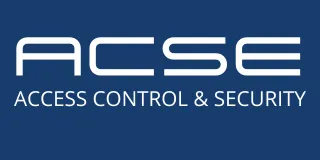
The Role of Technology in Modern Access Control Systems
Technology continues to redefine access control systems, elevating them beyond traditional lock-and-key setups into advanced ecosystems that blend security, efficiency, and convenience. Today’s systems, powered by innovations such as cloud computing, AI, and biometrics, are integral to creating secure, user-friendly facilities. For professionals in the field—be it installers, system integrators, or end-users—understanding these advancements is crucial for building smarter, more adaptable access control solutions.
The Modern Approach to Access Control
Modern access control systems are designed to address the diverse needs of today’s facilities, ranging from single-site buildings to complex multi-location enterprises. Cloud-based platforms, for instance, have emerged as a cornerstone of these systems, allowing real-time updates and remote management from anywhere. This eliminates the need for costly on-site servers while providing a scalable solution that can grow alongside a business.
Biometric authentication is another transformative feature. By using physical traits such as fingerprints or facial recognition, biometrics offer unparalleled security, ensuring that only authorized individuals gain access. Combined with AI-powered enhancements, these systems become faster and more accurate over time, adapting to unique user profiles.
The shift to mobile access is also reshaping the landscape. Smartphones are now virtual credentials, enabling contactless entry through NFC or Bluetooth technologies. This not only simplifies credential management but also offers a hygienic solution, particularly valuable in healthcare or high-traffic environments.
Overcoming Traditional Challenges with Technology
Traditional access control systems often faced scalability and integration issues. However, modern solutions are designed to address these pain points effectively. Cloud-based systems provide seamless scalability, allowing businesses to add new access points or users without major infrastructure changes. Multi-location operations can be managed from a centralized dashboard, streamlining operations and reducing administrative burdens.
Cybersecurity is another area where advancements are making a significant impact. Today’s systems feature robust encryption, multi-factor authentication, and frequent software updates to safeguard against data breaches. These measures are critical as access control becomes more interconnected with broader security networks.
Integration with existing systems, such as video surveillance or visitor management platforms, has also become more intuitive. Modern access control systems are built to communicate effortlessly with these technologies, creating a unified approach to facility security.
How AI and Data Analytics Transform Access Control
The integration of artificial intelligence and data analytics has revolutionized how access control systems operate. AI enhances security by detecting unusual behavior patterns, such as multiple failed access attempts or off-hours activity, and alerting administrators in real time. This proactive approach allows organizations to address potential threats before they escalate.
Data analytics provide valuable insights into facility usage. For example, administrators can track peak access times to optimize resource allocation or identify frequently accessed zones that may need enhanced security measures. The automation of administrative tasks, such as credential issuance and revocation, further reduces the workload on security teams while minimizing human errors.
AI’s impact extends to biometrics as well. By learning from every interaction, AI-powered biometric systems continuously improve their accuracy, ensuring reliable authentication even in challenging conditions like low lighting or weather variations.
Emerging Trends in Access Control Technology
As access control continues to evolve, several trends are shaping its future. The Internet of Things (IoT) is increasingly integrated into these systems, connecting smart locks, occupancy sensors, and environmental monitors to enhance functionality. IoT devices enable facilities to respond dynamically to real-time data, such as adjusting security levels based on occupancy.
Contactless technologies are gaining traction, driven by the demand for hygienic solutions. NFC-enabled badges and facial recognition systems are becoming staples in industries ranging from healthcare to education, offering fast, secure, and touch-free entry options.
Sustainability is also influencing the development of access control systems. Manufacturers are prioritizing energy-efficient designs, such as solar-powered hardware and cloud-based solutions that reduce energy consumption. These eco-friendly practices not only minimize environmental impact but also align with broader corporate sustainability goals.
Biometric innovations are expanding as well, incorporating modalities like voice recognition and gait analysis for specialized applications. Meanwhile, AI-driven predictive maintenance tools ensure uninterrupted system performance by monitoring device health and alerting administrators to potential issues before they occur.
Selecting the Right Technology for Your Needs
Choosing the best access control technology depends on a facility’s unique requirements. For smaller businesses, simple yet robust systems may suffice, while larger enterprises may require cloud-based platforms with centralized management capabilities.
Industry-specific considerations also play a role. Healthcare facilities, for instance, must comply with HIPAA regulations, while financial institutions may need solutions aligned with GDPR or similar data protection standards. Scalability and flexibility are essential factors to consider, ensuring that the system can adapt to future growth or changing security needs.
Implementing these systems effectively requires collaboration with experienced professionals. Partnering with skilled installers ensures seamless integration, while regular system evaluations and staff training help maintain optimal performance.
Technology’s role in access control extends far beyond convenience. It empowers businesses and institutions to create safer, smarter environments that adapt to changing demands. By leveraging advancements like AI, IoT, and biometrics, today’s access control systems provide unparalleled security and operational efficiency, paving the way for a future where intelligent, interconnected systems redefine how we think about facility access.

